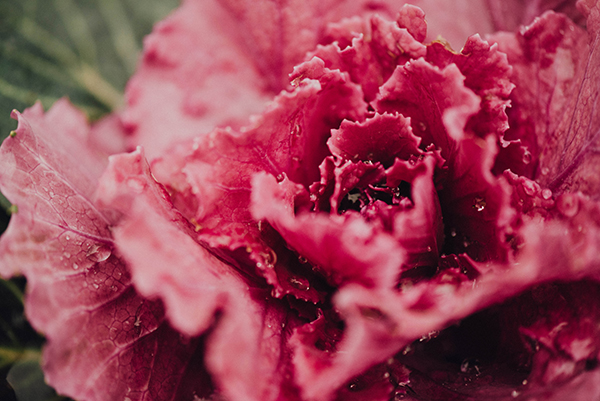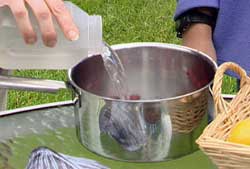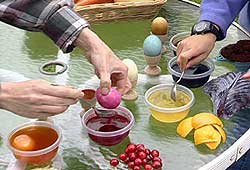
You can make natural dyes out of plants in your yard and your refrigerator. Do you want to know how? Follow along...
The first step is to gather dye material. If you've got a black walnut tree or some dandelions growing in your yard or nearby park, you're in luck. Gather some of the black walnuts and dandelions. We'll use the walnut shells and the dandelion roots and flowers in making dyes.
Next, raid the refrigerator. Look for a few red cabbage leaves, some orange peels, fresh cranberries, onion skins, or spinach. Sounds like lunch, huh?
Now, take whatever you're making the dye from, like the walnut shells, and put them in a saucepan. Add two cups of water. Get an adult to help you place the pan on a burner and bring it to a rapid boil. Then, simmer it for 10-to-20 minutes, turn off the heat, put a cover on the pan and let it steep (sit there with the plant material still in the pan) for at least an hour. Once that's done, you remove the plant parts, put the dyed water into a container and refrigerate it. Your dye is ready.
Here's the dye color that the different plant parts will give you.
- Walnut shells = nice brown color
- Cabbage leaves = robin egg blue
- Orange peels = light yellow
- Dandelion roots = red-pink (Who'd have guessed that?!)
- Dandelion flowers = yellow-green
- Cranberries = red
- Onion skins = orange
- Spinach leaves = a light gold
And when you're ready to color something, like hard-boiled eggs, put them in the container with the dye. It will look like you have some brilliantly colored hatched eggs.


